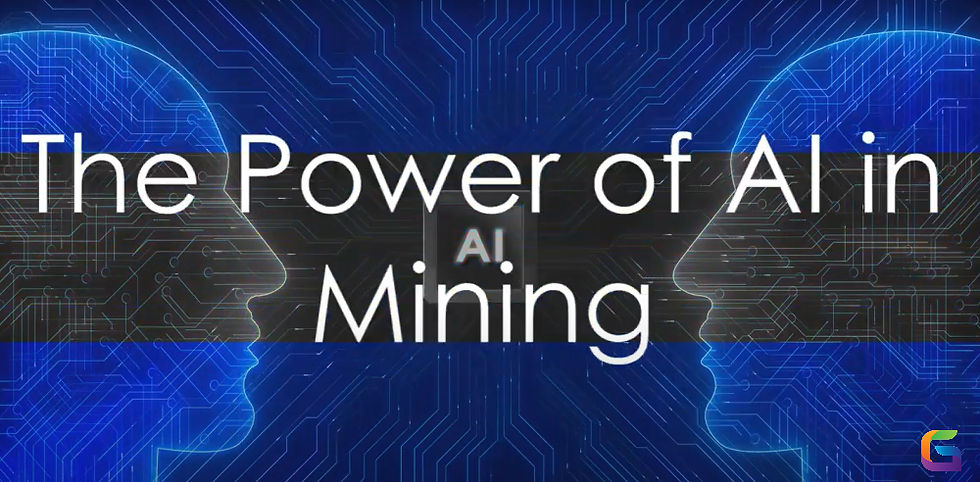Geospatial AI Enhancing Autonomous Driving Systems
- GeoWGS84

- Jun 24
- 3 min read
Autonomous driving systems depend on a combination of technologies—computer vision, deep learning, sensor fusion, and mapping. Among these, Geospatial Artificial Intelligence (GeoAI) is crucial for facilitating real-time decision-making, precise localization, and context-aware navigation.
What Is Geospatial AI in the Context of Autonomous Driving?
The term "geospatial AI" (GeoAI) describes the combination of artificial intelligence methods, including machine learning (ML), deep learning (DL), and spatial analytics, with geographic information systems (GIS). By analysing and making sense of location-based data, GeoAI offers a spatial intelligence layer for autonomous driving that enhances on-board sensors (LiDAR, RADAR, and cameras).

Key Components of GeoAI for Self-Driving Vehicles
1. High-Definition (HD) Map Generation
Accurate maps at the centimetre level are necessary for autonomous cars. HD maps are created and maintained with the aid of GeoAI by:
Convolutional neural networks (CNNs) are used to extract stop lines, curbs, crosswalks, and lane borders from satellite and aerial data.
Combining the results of SLAM (Simultaneous Localization and Mapping) with road networks based on GIS.
Utilizing spatiotemporal deep learning models to update maps dynamically in response to incidents, construction, and traffic changes.
2. Geographical Characteristic Extraction from Data from Remote Sensing
Remote sensing imagery can be interpreted using GeoAI to identify:
Surface conditions and road topology
Slope and height of the terrain
Urban infrastructure and challenges
Land use, road conditions, and navigational hazards are all classified at scale by deep learning models that have been trained on geospatial datasets (such as SpaceNet and DeepGlobe).
3. Path planning and real-time localization
GeoAI integrates spatial priors, HD maps, and vehicle GPS:
Beyond GPS drift, Bayesian filtering and Kalman filters increase localization accuracy by utilizing past geospatial knowledge.
Real-time path planning is informed by semantic segmentation of geographical context, such as identifying a roundabout from a T-junction.
Based on anticipated spatial-temporal patterns, graph-based spatial networks direct rerouting and route optimization.
4. Predictive modelling in geography
Road blockages, traffic congestion, pedestrian density, and weather are all predicted using spatiotemporal forecasting models.
Proactive navigation is made possible by models like LSTM-CNN hybrids or Graph Neural Networks (GNNs) trained on historical geographic mobility datasets (such as traffic sensors and taxi recordings).
Sensor Fusion and GeoAI Integration
Autonomous driving systems combine external geographic intelligence with onboard perception:
Geocoding of sensor events and context-aware sensor calibration are made possible by GeoAI, which aligns static and dynamic geographical contexts.
GeoAI Frameworks and Tools for Autonomous Vehicles
GeoAI development for AVs is supported by several open-source and commercial platforms:
ESRI ArcGIS AI tools: Integrated GPU acceleration for spatial deep learning.
OpenCV + PyTorch: For transfer learning and the extraction of visual-geospatial features.
For route creation and geographic searches, use PostGIS + pgRouting.
Google Earth Engine plus TensorFlow: For training spatial models and preprocessing satellite imagery.
Vehicle localization stacks are integrated with HD mapping APIs such as Mapbox, HERE, and TomTom.
Future Directions: 5G, Federated Learning & GeoSim
Ultra-low latency GeoAI model updates from the cloud to the vehicle are made possible by 5G.
Without centralizing data, federated learning enables distributed geographic model training across fleets.
Digital twins are used in geospatial simulation environments (GeoSim) to replicate real-world driving situations for testing GeoAI models.
Geospatial AI is crucial as autonomous cars go from advanced driver-assistance systems (ADAS) to complete autonomy in order to guarantee accuracy, security, and flexibility in perception and navigation. AVs can make informed decisions at every intersection, bend, and lane change by combining deep learning and spatial intelligence to gain a high-resolution understanding of their surroundings.
For more information or any questions regarding geospatial AI, please don't hesitate to contact us at
Email: info@geowgs84.com
USA (HQ): (720) 702–4849
(A GeoWGS84 Corp Company)




Comments